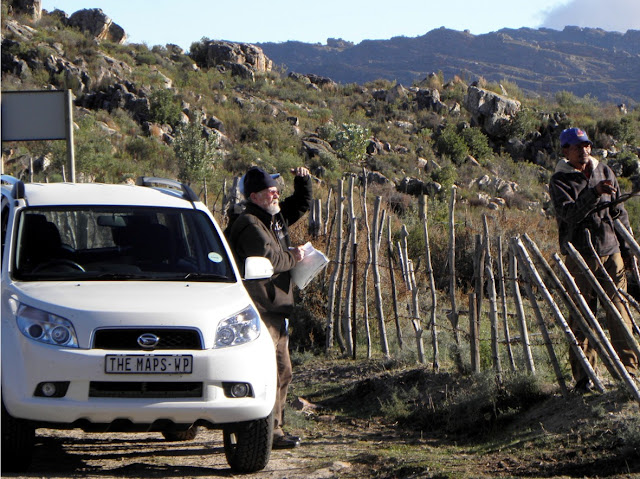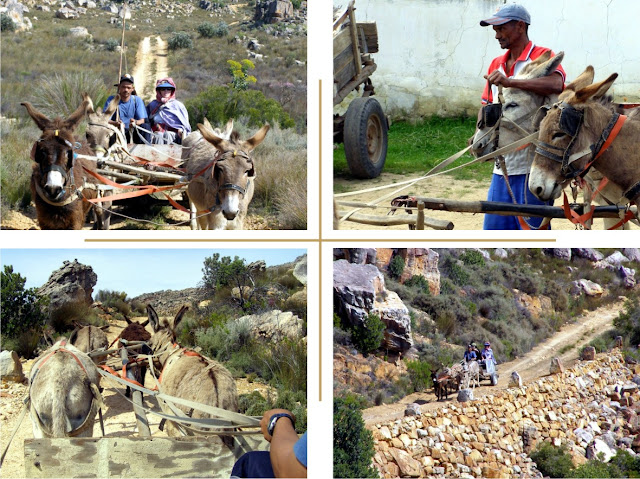If you’re a Cederberg fan and you’ve never explored the Wupperthal “buiteposte”, it’s time you did. Peter Hart’s great “Cederberg Heritage Route” traverses a part of this territory, but you don’t need a guided tour to do your own exploring in this lovely “other universe” of thatched cottages, donkey carts and very friendly people. I’ve put up a fuller description with pictures and contact names and numbers on http://mapsforafrika.blogspot.com .
We spent most of a week based at Heuningvlei, interviewing locals and enjoying drives around their beautiful countryside, collecting names for the map. We took as our starting point all the place names mentioned in M. I. Murray’s “Witwater se Mense”. That book is another “must” if you consider yourself a real Cederberg enthusiast: it’s a fascinating account of life in the buiteposte in the 1930s/1940s. It rings with authenticity; it’s a sort of South African “Little House on the Prairie” and it’s a singular tragedy that it has never been translated into English and is not better known. Published by Tafelberg, it’s apparently long out of print but is still in most public libraries. Come on, Tafelberg – skrik wakker, julle.
 |
| Heuningvlei seen from the Nougang – a new name on the map! |
 |
| Collecting names at Witwater: Kerneels Filander advises |
 |
| Heiveldt |
 |
| The Citadel, seen from the Kerskop Pass ... but all the locals call it Tandjiesberg. Which name is more valid or ‘authentic’? |
 |
| On the Noodpad Donkey Trail: Top Left: Gert Theron driving up to Môrehoog; Top Right: Joey Ockhuis inspanning asses Bottom Left: Climbing Swartgat; Bottom Right: Cruising Potlood se Bank |
 |
| Die Hang: cottage on the Wupperthal road that has never been named on any map |
 |
| Part of Laurie se Hel, the nightmarish slopes of Sneeukop, behind Eselbank. It’s shown in quite the wrong place on all existing maps ... |
Think about that next time you’re in the ‘untouched wilderness’, and you pick up a rusty piece of an old plough at Grootlandsvlakte, or a piece of blue bottle-glass at Crystal Pool ... our beloved country is, for sure, a very complex place, with many untold stories yet to get out there.
Sowaar.
Kaartman, June 2012

No comments:
Post a Comment
Any comments that may help make our proposed map as good as it gets are very welcome
Note: Only a member of this blog may post a comment.